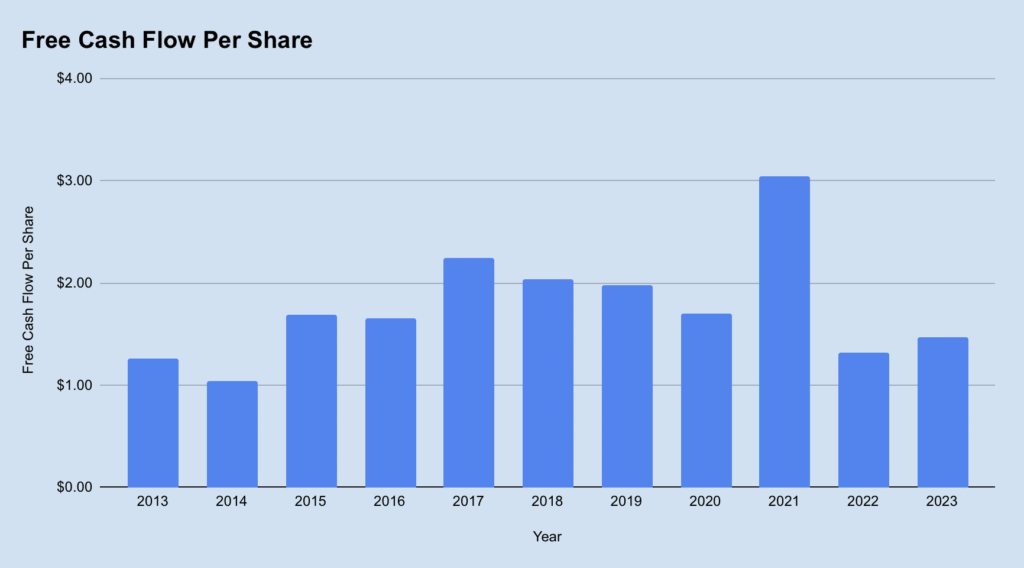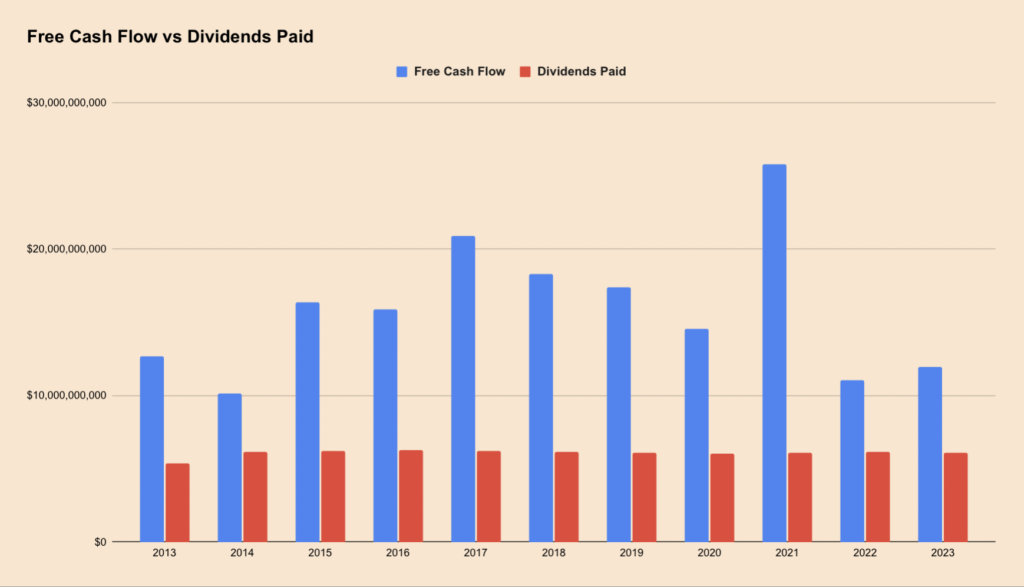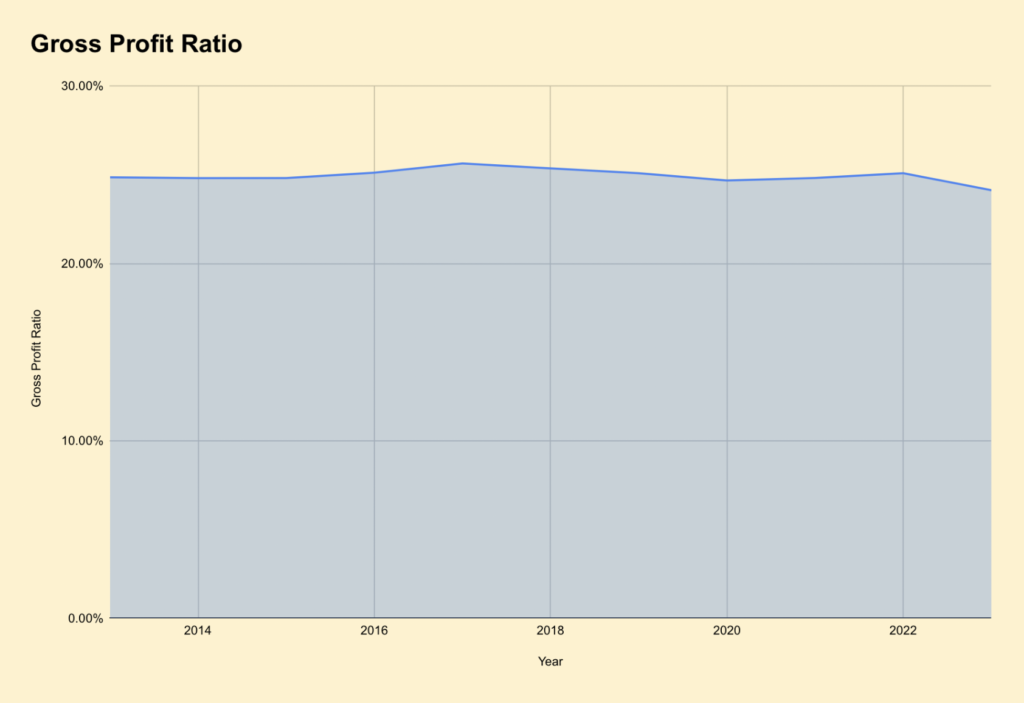Still, the retail giant is doing better in 2024, with shares up 13% compared to a 5.5% gain by the popular index. That raises the question of whether Walmart can keep this pace going. So before you decide to buy or sell Walmart stock, take a look at these four charts to help summarize where its business is headed now.
1. Steady Revenue Growth Boosts Walmart Stock
For a company the size of Walmart, it produces remarkably steady revenue growth. You’re not going to get large spikes higher, but you do see regular, incremental gains by the retail. In 2023 Walmart generated $611.3 billion in sales. That’s a massive amount so you can’t expect the retailer to post double-digit gains.

It also means investors need not worry about any wild swings lower. Consumers trust Walmart to be the everyday low price (EDLP) leader, which is why they shop its stores. Particularly in high inflation, high interest rates environment, Walmart stores are where consumers can stretch their wallets further.
2. Free Cash Flow Trends Lower
Although Walmart generates a significant amount of free cash flow every year, almost $12 billion worth in 2023, that’s 42% less than what it produced in 2017 when it saw almost $21 billion in FCF.
Now it spiked higher in 2021, but that was because of the pandemic, which caused it to experience greater inventory sell-through.

Yet Walmart produces more than sufficient FCF to cover its dividends and buyback shares. Shares outstanding over the past decade have shrunk from 10.1 billion to 8.1 billion.
3. A Dividend King
Speaking of dividends, Walmart’s payout is secure. It has an FCF payout ratio of 52% meaning there is more than effort cash left over after paying its bills to fund the dividend payments.

Walmart is a Dividend King with over 50 years of raising the payout, yet it has never been never been much of a dividend growth stock.
The 10-year compounded annual growth rate of the dividend is about 2% while its total return of 175% lags the benchmark index by almost 50 percentage points.
4. A Profitable Venture
There’s no question Walmart is a profitable company and will remain so so long as it maintains its position as the discount retailer of choice. The only times it has really run into trouble with consumers is when it tried to rise above its station.
On only a few occasions Walmart sought to abandon its EDLP policy or go upscale, such as with fashion goods. Consumers rejected those efforts and the retailer quickly course corrected.

The chart shows just how amazingly consistent the retailer is.Its gross profit ratio has rarely deflected from its 10-year CAGR of around 24% to 25%.
That sort of consistency ensures that Walmart is a steady-state stock through all kinds of situations.
Is Walmart Stock a Buy?
An investor could hardly go wrong buying Walmart stock at almost any time. The retailer’s shares have offered investors a total return north of 422,000% since the company went public in the 1970s.
There have been a few ups and downs along the way but especially once it gained critical mass and its reach touched almost every American’s life, buying WMT stock has been a good investment.
It will likely continue to be so for another 50 years or more too.
On the date of publication, Rich Duprey did not hold (either directly or indirectly) any positions in the securities mentioned in this article. The opinions expressed in this article are those of the writer, subject to the InvestorPlace.com Publishing Guidelines.
Rich Duprey has written about stocks and investing for the past 20 years. His articles have appeared on Nasdaq.com, The Motley Fool, and Yahoo! Finance, and he has been referenced by U.S. and international publications, including MarketWatch, Financial Times, Forbes, Fast Company, USA Today, Milwaukee Journal Sentinel, Cheddar News, The Boston Globe, L’Express, and numerous other news outlets.
